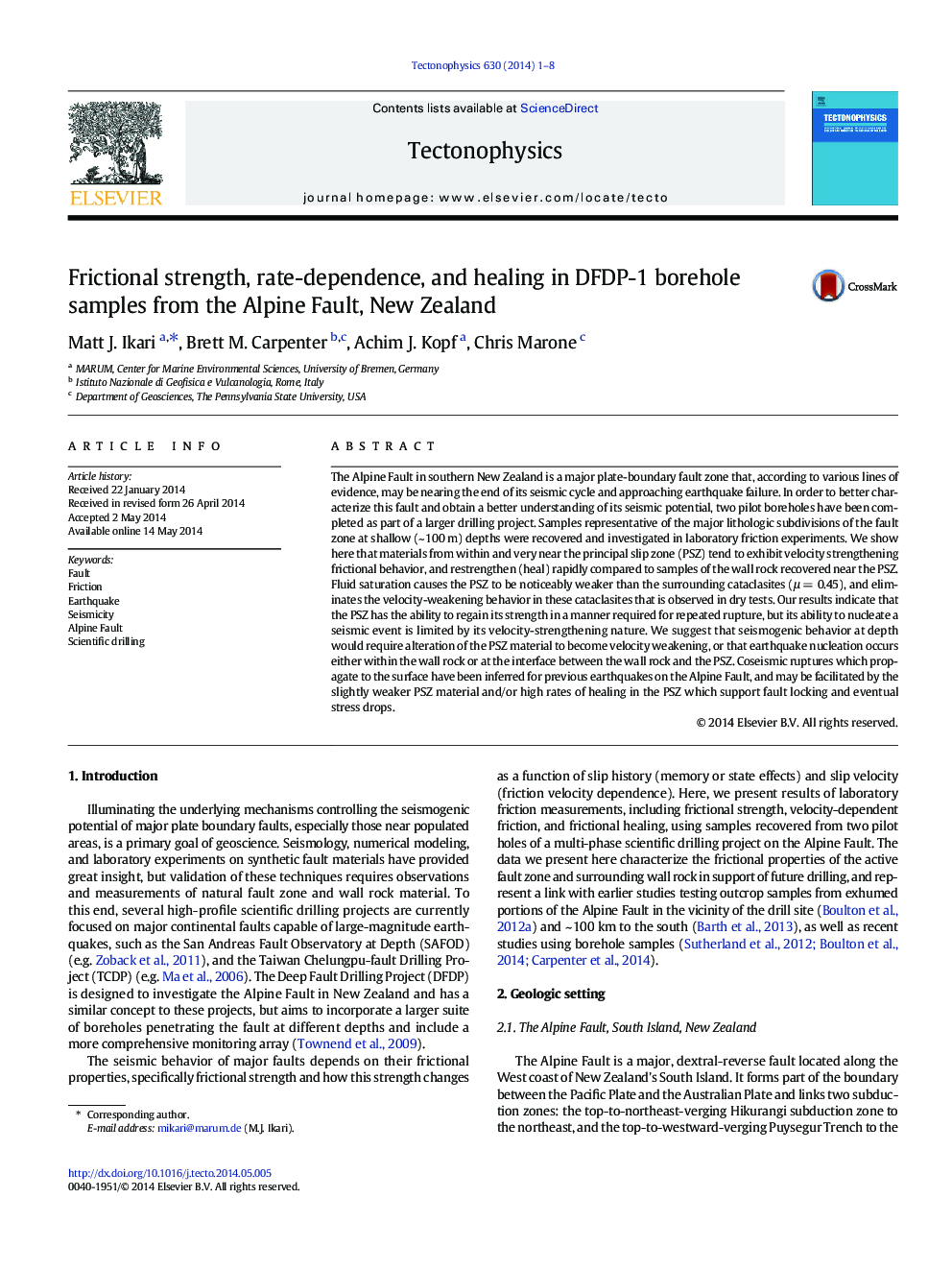| کد مقاله | کد نشریه | سال انتشار | مقاله انگلیسی | نسخه تمام متن |
|---|---|---|---|---|
| 6433667 | 1636761 | 2014 | 8 صفحه PDF | دانلود رایگان |

- We present friction measurements on Alpine Fault, NZ samples from DFDP-1 boreholes.
- Frictional healing in the fault zone is favorable for repeating earthquakes.
- Velocity-strengthening in the fault zone is unfavorable for earthquake nucleation.
- Earthquakes from depth likely propagate along the fault zone/wall rock boundary.
The Alpine Fault in southern New Zealand is a major plate-boundary fault zone that, according to various lines of evidence, may be nearing the end of its seismic cycle and approaching earthquake failure. In order to better characterize this fault and obtain a better understanding of its seismic potential, two pilot boreholes have been completed as part of a larger drilling project. Samples representative of the major lithologic subdivisions of the fault zone at shallow (~ 100 m) depths were recovered and investigated in laboratory friction experiments. We show here that materials from within and very near the principal slip zone (PSZ) tend to exhibit velocity strengthening frictional behavior, and restrengthen (heal) rapidly compared to samples of the wall rock recovered near the PSZ. Fluid saturation causes the PSZ to be noticeably weaker than the surrounding cataclasites (μ = 0.45), and eliminates the velocity-weakening behavior in these cataclasites that is observed in dry tests. Our results indicate that the PSZ has the ability to regain its strength in a manner required for repeated rupture, but its ability to nucleate a seismic event is limited by its velocity-strengthening nature. We suggest that seismogenic behavior at depth would require alteration of the PSZ material to become velocity weakening, or that earthquake nucleation occurs either within the wall rock or at the interface between the wall rock and the PSZ. Coseismic ruptures which propagate to the surface have been inferred for previous earthquakes on the Alpine Fault, and may be facilitated by the slightly weaker PSZ material and/or high rates of healing in the PSZ which support fault locking and eventual stress drops.
Journal: Tectonophysics - Volume 630, 3 September 2014, Pages 1-8